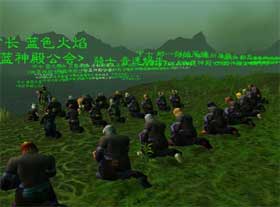 I'm currently investigating the way new media artist and designers explore mourning, its rituals and the ways to keep some form of life after death (any suggestion from readers is more than welcome.) It can translate into physical artefacts such as in Shiho Fukuhara and Georg Tremmel's famous project Biopresence, Michael Burton's Memento Mori In Vitro which imagine how the hair of the deceased can be kept alive. It can also envision a device or service that would consist of both a tangible object and its online complement like Elliott Malkin's Cemetery 2.0, a device that connects a grave to online memorials for the deceased; Digital Remains by Michele Gauler which wonders what happens to your digital data when you die; Mission Eternity by etoy, which would use the power of networked digital technology and inexpensive storage to keep aspects of us alive after we're dead; or Okude laboratory's Mastaba, a novel family shrine that consist of digital memories of ancestors with a wooden physical structure.
I'm currently investigating the way new media artist and designers explore mourning, its rituals and the ways to keep some form of life after death (any suggestion from readers is more than welcome.) It can translate into physical artefacts such as in Shiho Fukuhara and Georg Tremmel's famous project Biopresence, Michael Burton's Memento Mori In Vitro which imagine how the hair of the deceased can be kept alive. It can also envision a device or service that would consist of both a tangible object and its online complement like Elliott Malkin's Cemetery 2.0, a device that connects a grave to online memorials for the deceased; Digital Remains by Michele Gauler which wonders what happens to your digital data when you die; Mission Eternity by etoy, which would use the power of networked digital technology and inexpensive storage to keep aspects of us alive after we're dead; or Okude laboratory's Mastaba, a novel family shrine that consist of digital memories of ancestors with a wooden physical structure.
Or the projects might be purely virtual.
As Valentina Culatti at Neural puts it, "Just as the Web has changed long-established rituals of flirting and socializing, personal Web pages on social networking sites like MySpace are altering the rituals of mourning."

The practice of turning the MySpace page of a deceased user into a virtual gravestone has spawned a Web site focused on aggregating information about the deceased. Yourdeathspace, started 2 years ago, is simply a "collection of dead MySpace users." MyDeathSpace aggregates links to deceased MySpace users' pages, news stories, obituaries or blogs that detail their lives as well as how they died. Behavior researchers at the University of South Florida apparently follow its development to get insight into the psychosocial effects that social networks might have on youth, and whether online memorials and forums that focus on death encourage teen suicides or comfort those grieving. Researcher Ilene Berson says that the Internet lacks policing efforts similar to those at newspapers and broadcast outlets, where news stories about suicides are sometimes subdued.
The website has unsurprisingly stirred controversy for what some perceive as an irreverence towards the dead. However it is inevitable that as the Internet becomes a bigger part of our lives, it will become a place (the place?) we'll go to pay our respects.
This exploration into mourning and digital culture is still in an embryonic state. For example, i lack information about how it translates into the game world so i'd be happy to hear of any piece of information you could give me on the subject.
Image.
Related: projects that deal with suicide; AfterLife, by Auger and Loizeau, aims at using cadavers as a resource to produce some energy; Post Mortem (part 1).

